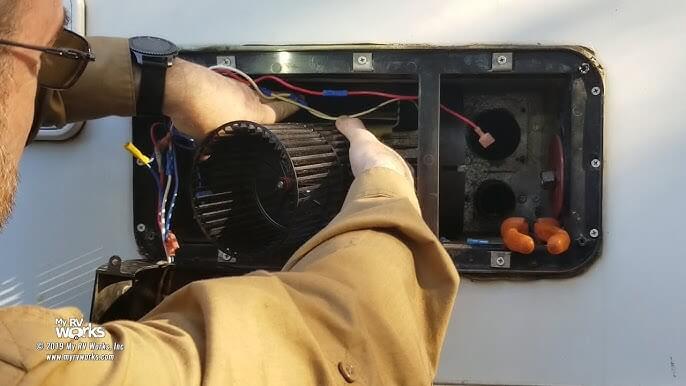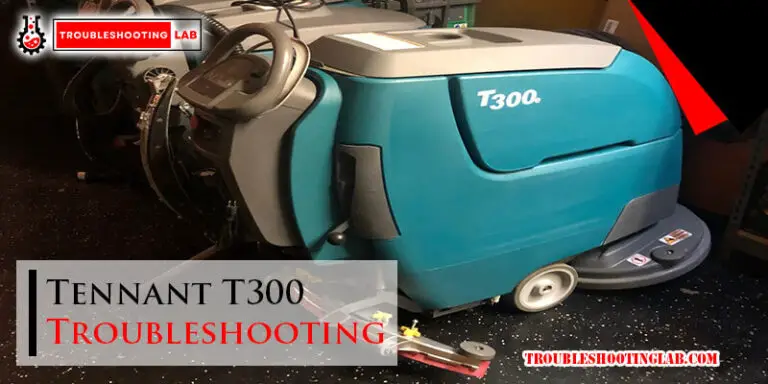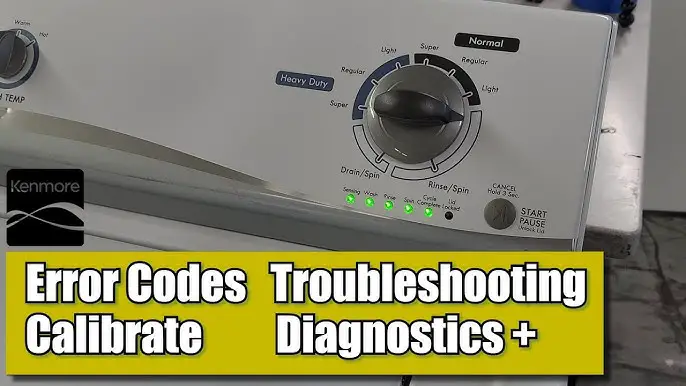Atwood Furnace Troubleshooting: Expert Tips for Quick Fixes
To troubleshoot an Atwood furnace, one of the most common causes of ignition lockout is a defective flame sensor. If the sensor is dirty or faulty, it won’t be able to detect the flame, causing the controller to stop the ignition sequence.
Additionally, if the battery cable connections are loose or if the LP tank is low on fuel, the furnace may not ignite or may not keep up with heating demand. RV owners can try checking the sensor, cleaning or replacing it if necessary, and ensuring that the battery connections are secure and the LP tank is adequately filled.
If these troubleshooting steps don’t solve the issue, it may be necessary to consult an RV technician for further assistance.

Introduction To Atwood Furnace Troubleshooting
If you’re experiencing issues with your Atwood furnace, our introductory guide to Atwood Furnace Troubleshooting can help. Learn how to diagnose and troubleshoot common problems in your furnace to ensure efficient heating in your RV.
Understanding The Common Issues
When it comes to maintaining the functionality of your Atwood furnace, it’s crucial to understand the common issues that can arise. By familiarizing yourself with these problems, you can effectively troubleshoot and resolve them in a timely manner. Some of the most common issues that RV owners encounter with their Atwood furnaces include ignition problems, heating inefficiency, and ventilation issues. These can be caused by factors such as faulty flame sensors, low fuel levels, or poor airflow. Understanding these common issues is the first step in troubleshooting your Atwood furnace.
Importance Of Troubleshooting
Troubleshooting your Atwood furnace is essential for several reasons. Firstly, it allows you to identify and address any issues before they become major problems, saving you time and money on costly repairs. Secondly, regular troubleshooting helps to ensure the optimal performance and efficiency of your furnace, keeping you warm and comfortable throughout your RV journeys. Lastly, troubleshooting can help enhance the longevity of your Atwood furnace, preventing premature breakdowns and extending its lifespan. Taking the time to troubleshoot your furnace can greatly enhance its performance and overall durability.
Key Tools For Troubleshooting
To effectively troubleshoot your Atwood furnace, it’s important to have the right tools on hand. Some key tools that can help you diagnose and address common issues include a multimeter, a voltmeter, and a screwdriver set. These tools will enable you to measure voltage levels, check connections, and safely handle any necessary repairs or replacements. Additionally, having access to the Atwood furnace manual or online resources can provide valuable troubleshooting guidance specific to your furnace model. By utilizing these key tools and resources, you can ensure a smooth troubleshooting process and successfully resolve any issues that may arise.
In conclusion, understanding the common issues, recognizing the importance of troubleshooting, and having the right tools at your disposal are all crucial elements in successfully addressing any problems with your Atwood furnace. By taking a proactive approach to troubleshooting, you can maintain a reliable and efficient furnace that keeps you warm during your RV adventures. Don’t wait for the heat to go out – be prepared to troubleshoot and resolve any issues that come your way.
Diagnosing The Problem
When your Atwood furnace stops working, it can be frustrating, especially during the colder months. However, before you call a professional, it’s a good idea to try and diagnose the problem yourself. By doing some basic troubleshooting, you may be able to identify the issue and potentially fix it on your own. In this section, we will explore some common steps to help you diagnose the problem with your Atwood furnace.
Checking For Power Supply
The first step in diagnosing any problem with your Atwood furnace is to ensure that it is receiving power. Check the power supply by examining the circuit breaker or fuse box. Look for any tripped breakers or blown fuses related to the furnace. If you find any, reset the breaker or replace the fuse. Also, make sure that the furnace is properly connected to a power source. Inspect the electrical connections to ensure they are secure and free from any damage.
Inspecting The Thermostat
Next, you’ll want to inspect the thermostat. Start by making sure the thermostat is set to the desired temperature and in the appropriate mode (heat, fan, etc.). If the thermostat is battery-powered, check the batteries and replace them if necessary. Additionally, clean the thermostat’s sensor with a soft cloth to remove any debris or dust that may be interfering with its functionality. It’s also a good idea to check the wiring connections at the thermostat to ensure they are tight and properly connected.
Examining The Circuit Board
Finally, you should examine the circuit board of your Atwood furnace. The circuit board is responsible for controlling the various functions of the furnace. Inspect the circuit board for any signs of damage, such as burnt or corroded components. If you notice any issues, you may need to replace the circuit board. Make sure to follow the manufacturer’s instructions for proper removal and installation.
By following these steps and performing some basic troubleshooting, you may be able to diagnose the problem with your Atwood furnace. However, if you are unable to resolve the issue or if you are unsure about performing any repairs yourself, it is best to seek professional help. Remember, safety should always be your top priority when dealing with electrical appliances.
Troubleshooting The Ignition System
When it comes to troubleshooting an Atwood furnace, one of the most crucial components to examine is the ignition system. If there are issues with the ignition system, your furnace may fail to start or produce heat. In this section, we will cover the key steps to take when troubleshooting the ignition system of your Atwood furnace.
Testing The Sparker
The first step in troubleshooting the ignition system is to test the sparker. The sparker is responsible for producing the spark that ignites the gas in the furnace. Here’s how you can test the sparker:
- Ensure the furnace is turned off and disconnected from the power source.
- Locate the sparker, which is usually positioned near the burner chamber.
- Inspect the sparker for any signs of damage or wear. Replace it if necessary.
- Once you’ve confirmed the sparker is in good condition, carefully turn on the furnace and observe if the sparker produces a spark.
- If the sparker fails to produce a spark, it may need to be replaced. Contact a professional technician for further assistance.
Checking The Gas Valve
Another important step in troubleshooting the ignition system is to check the gas valve. The gas valve controls the flow of gas into the furnace. Here’s how you can check the gas valve:
- Turn off the furnace and disconnect it from the power source.
- Locate the gas valve, which is typically found near the gas supply line.
- Inspect the gas valve for any signs of damage or leaks. If you detect any issues, contact a professional technician.
- Once you’ve confirmed the gas valve is in good condition, turn on the furnace and listen for the sound of gas flowing through the valve.
- If you don’t hear the sound of gas flowing, the gas valve may need to be replaced. Seek assistance from a qualified technician.
Inspecting The Electrode
The electrode is a critical component of the ignition system that produces the spark to ignite the gas. Inspecting the electrode is essential for troubleshooting furnace ignition issues. Here’s how you can inspect the electrode:
- Make sure the furnace is turned off and disconnected from the power source.
- Locate the electrode, which is often positioned near the burner chamber.
- Check the electrode for any signs of corrosion or carbon buildup. If there is significant buildup, clean it carefully with a soft brush.
- Ensure the electrode is properly positioned and aligned with the burner chamber.
- After inspecting and cleaning the electrode, turn on the furnace and observe if it produces a spark during ignition.
- If the electrode fails to produce a spark, it may need to be replaced. Consult a professional technician for assistance.
By following these steps to troubleshoot the ignition system of your Atwood furnace, you can identify and resolve issues that may prevent your furnace from starting or heating properly. Remember, if you are unsure or uncomfortable performing these troubleshooting steps on your own, it is always best to seek assistance from a qualified professional.
Fixes For Specific Issues
When it comes to troubleshooting your Atwood furnace, it’s important to know the specific fixes for common issues that may arise. This section will guide you through three important fixes: resetting the furnace, troubleshooting the electrode, and replacing the circuit board. Let’s dive in!
Resetting The Furnace
To reset your Atwood furnace, follow these simple steps:
- Turn off the furnace and thermostat.
- Locate the reset button on the furnace.
- Press and hold the reset button for 10 seconds.
- Release the reset button and wait for the furnace to restart.
If the furnace still doesn’t work after resetting, it’s time to move on to troubleshooting the electrode.
Troubleshooting The Electrode
If your Atwood furnace is not igniting properly, it could be due to a faulty electrode. Follow these steps to troubleshoot the electrode:
- Turn off the furnace and thermostat.
- Remove the electrode cover.
- Inspect the electrode for any signs of damage or buildup.
- Clean the electrode with a soft brush or cloth.
- Replace the electrode cover and turn on the furnace.
If the furnace still fails to ignite, it’s time to consider replacing the circuit board.
Replacing The Circuit Board
If all other troubleshooting methods have failed, it might be necessary to replace the circuit board. Here’s how:
- Turn off the furnace and thermostat.
- Locate the circuit board inside the furnace.
- Disconnect the wires attached to the circuit board.
- Remove the circuit board from its housing.
- Install the new circuit board in the same position.
- Reconnect the wires to the new circuit board.
- Turn on the furnace and see if it functions properly.
Remember, if you’re not comfortable replacing the circuit board yourself, it’s best to contact a professional technician for assistance.
To ensure the longevity and efficient performance of your Atwood furnace, regular maintenance and timely troubleshooting are essential. By following these fixes for specific issues, you’ll be able to address common furnace problems and keep your RV warm and cozy during your adventures.
Preventive Maintenance And Tips
Proper maintenance and regular checks are essential to keep your Atwood furnace running smoothly and efficiently. By following these preventive maintenance tips, you can minimize the chances of encountering any issues with your furnace.
Cleaning And Maintenance
To ensure optimal performance, it is crucial to regularly clean and maintain your Atwood furnace. Here are some steps to keep in mind:
- Inspect the furnace for any visible signs of dirt, debris, or obstructions.
- Use a soft brush or cloth to remove any dust or dirt from the furnace components, including the blower motor, burners, and the heat exchanger.
- Check and clean the air filters regularly, as clogged filters can reduce airflow and strain the furnace.
- Inspect the vents and exhaust pipes for any blockages or debris that might hinder proper air circulation.
- Regularly lubricate the furnace’s moving parts, such as the blower motor and bearings, to prevent friction and extend their lifespan.
Common Mistakes To Avoid
When troubleshooting your Atwood furnace, it’s essential to avoid these common mistakes that can potentially exacerbate the problem:
- Avoid ignoring or postponing regular maintenance tasks, as this can lead to more significant issues down the line.
- Avoid using abrasive or harsh cleaning agents that can damage the furnace components.
- Do not attempt to repair or modify the furnace without proper knowledge and equipment, as it can be dangerous and void the warranty.
- Avoid overlooking unusual sounds or smells coming from the furnace, as they can indicate underlying issues that need immediate attention.
- Do not ignore warning signs or error codes from the furnace control panel, as they can provide valuable information about the problem.
When To Seek Professional Help
In some cases, troubleshooting and preventive maintenance may not be enough to resolve furnace issues. Here are some situations where it’s best to seek professional help:
- If the furnace continues to malfunction even after following the troubleshooting steps.
- If there are unusual smells, excessive noise, or visible damage to the furnace components.
- If there is a sudden increase in energy consumption or a significant decrease in heating efficiency.
- If the furnace fails to turn on or stay on, despite all power supply and thermostat settings being correct.
Remember, regular preventive maintenance and prompt professional assistance can help you avoid costly repairs and ensure the longevity of your Atwood furnace. By taking care of your furnace, you can stay warm and comfortable during those chilly winter months.
Frequently Asked Questions
What Would Cause A Rv Furnace Not To Ignite?
A faulty or dirty flame sensor is a common cause of an RV furnace not igniting. The sensor is responsible for detecting the flame, and if it can’t do so, the ignition sequence will be stopped. Check and clean the flame sensor to resolve the issue.
What Causes Ignition Lockout On Atwood Furnace?
A defective flame sensor is one of the common causes of ignition lockout on Atwood furnaces. The sensor checks for the presence of fire during the ignition sequence, but if it is faulty or dirty, it won’t detect the flame and the controller will stop the ignition.
How Do I Reset My Rv Furnace?
To reset your RV furnace, follow these steps: 1. Check for any loose connections or obstructions in the furnace. 2. Verify that the LP tank has enough fuel. 3. Turn off the furnace and wait for 5 minutes. 4. Turn the furnace back on and set it to the desired temperature. 5. If the issue persists, consult a professional RV technician.
Why Is My Rv Furnace Not Keeping Up?
If your RV furnace is not keeping up, check for loose battery cable connections. Other issues may require an RV technician’s assistance. This can happen if the furnace exceeds the LP rate of vaporization in extremely cold temperatures with a low LP tank fuel level.
The furnace may run initially but quickly run out of fuel.
Why Is My Atwood Furnace Not Heating Up?
There are several possible reasons for this issue, including a faulty thermostat, a clogged air filter, or a malfunctioning blower motor. Check these components and replace if necessary.
Conclusion
If you’re facing issues with your Atwood furnace, troubleshooting can help you identify and solve the problem. Defective flame sensors or low battery voltage are common culprits that can prevent ignition. Additionally, obstructions in the air intake or exhaust, low gas pressure, and faulty switches can lead to furnace malfunctions.
By following proper troubleshooting steps and consulting the Atwood Furnace Service Manual, you can restore your furnace’s functionality and enjoy a cozy RV experience. Remember to seek professional help if needed.






